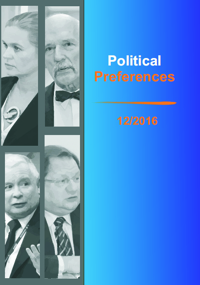

Public Perception of the Door-to-Door Method
The present text discusses the opinions of the Poles on the method of conducting the election campaign, which consists in the election candidate or his/her representative directly visiting homes of voters (the door-to-door method). The objective of the study described in this article was to find out whether the door-to-door method is regarded by voters as helpful to the candidate in the election and to what extent the voters are inclined to receive at their homes the candidate conducting the election campaign.
Key words:
door-to-door method, election campaign
Download files
Citation rules

No. 12 (2016)
Published: 2016-12-01
 10.31261/polpre
10.31261/polpre